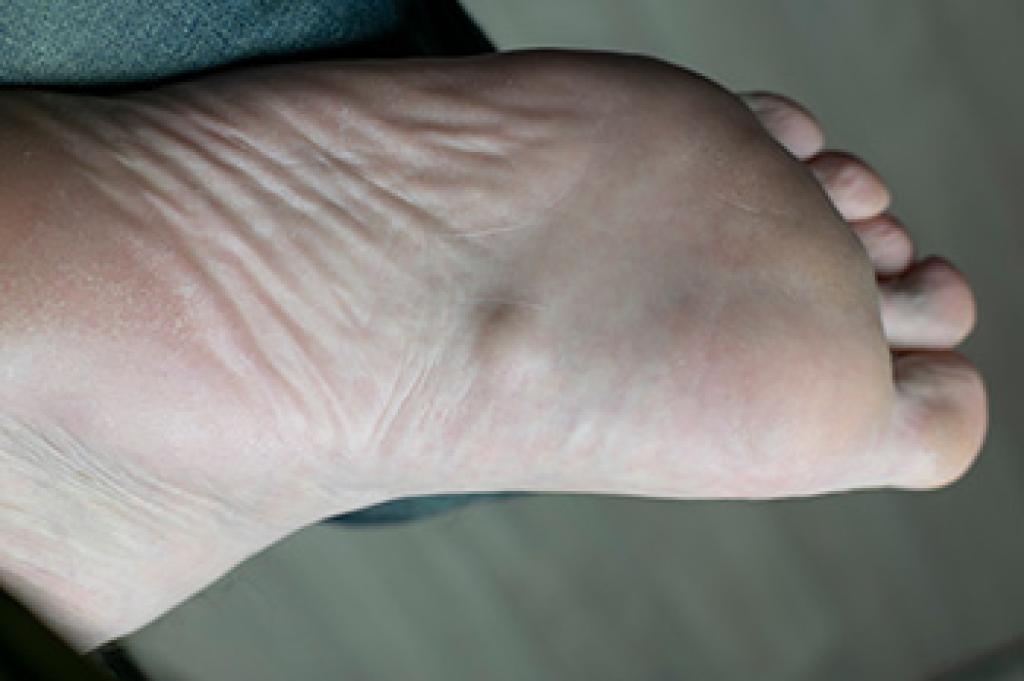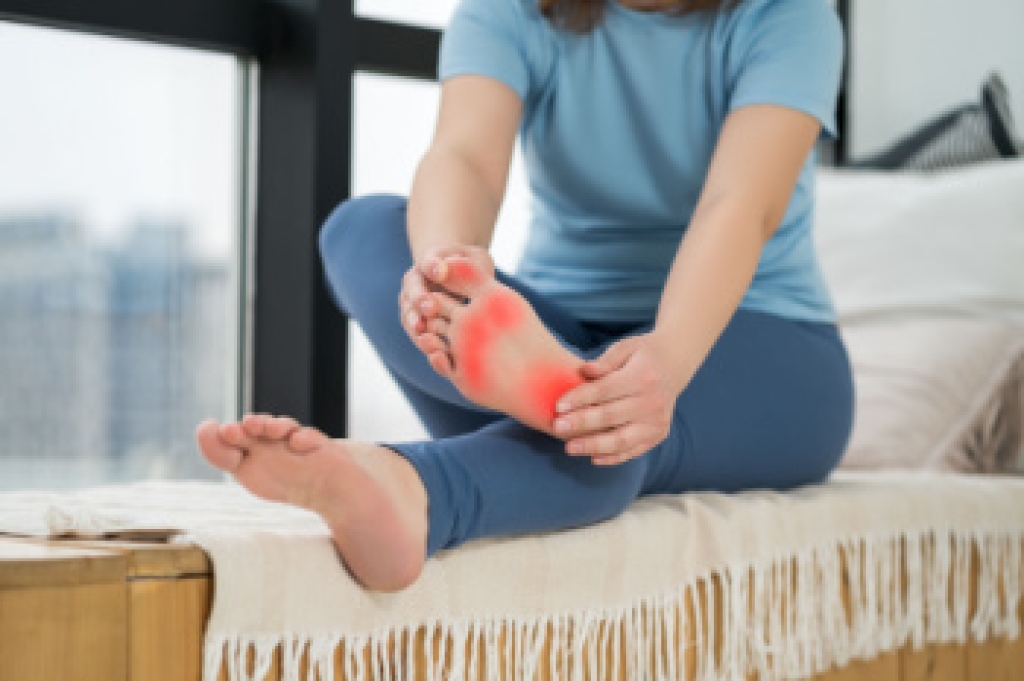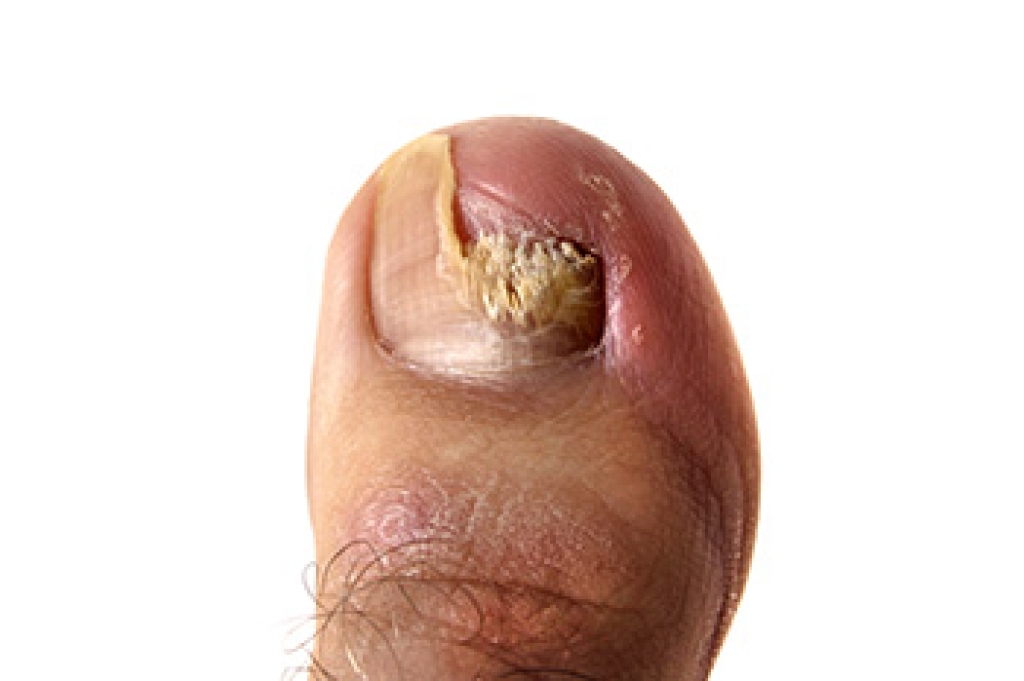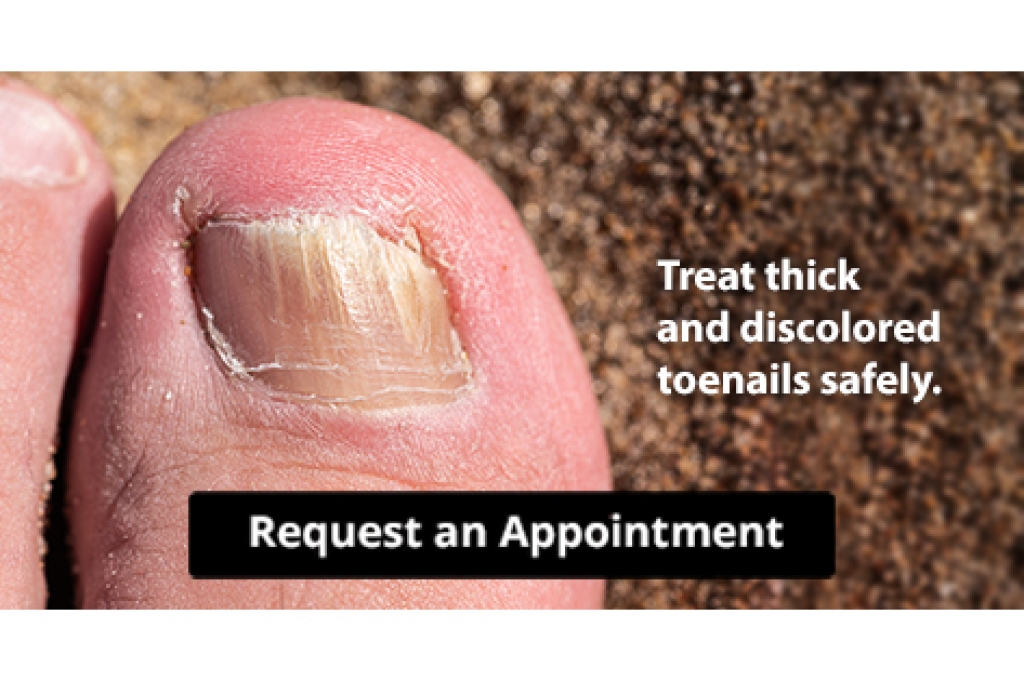Blog
Possible Causes of Ingrown Toenails
 Patients who have experienced an ingrown toenail are often aware of the pain and discomfort this condition can cause. It is defined as the corner of the toenail growing into the surrounding skin. It can occur as a result of wearing shoes that do not have adequate room for the toes to move freely in, or from trimming the toenails improperly. Mild relief can be found when the affected nail is soaked in warm water. This may help in lifting a portion of the skin away from the nail while using a cotton swab. If the toenail becomes infected, a yellow discharge may appear, and a fever may develop. It is suggested that you consult with a podiatrist if you have an ingrown toenail who can determine what the best treatment method is for you.
Patients who have experienced an ingrown toenail are often aware of the pain and discomfort this condition can cause. It is defined as the corner of the toenail growing into the surrounding skin. It can occur as a result of wearing shoes that do not have adequate room for the toes to move freely in, or from trimming the toenails improperly. Mild relief can be found when the affected nail is soaked in warm water. This may help in lifting a portion of the skin away from the nail while using a cotton swab. If the toenail becomes infected, a yellow discharge may appear, and a fever may develop. It is suggested that you consult with a podiatrist if you have an ingrown toenail who can determine what the best treatment method is for you.
Ingrown toenails can become painful if they are not treated properly. For more information about ingrown toenails, contact one of our podiatrists of Graff Foot, Ankle and Wound Care. Our doctors can provide the care you need to keep you pain-free and on your feet.
Ingrown Toenails
Ingrown toenails occur when a toenail grows sideways into the bed of the nail, causing pain, swelling, and possibly infection.
Causes
- Bacterial infections
- Improper nail cutting such as cutting it too short or not straight across
- Trauma to the toe, such as stubbing, which causes the nail to grow back irregularly
- Ill-fitting shoes that bunch the toes too close together
- Genetic predisposition
Prevention
Because ingrown toenails are not something found outside of shoe-wearing cultures, going barefoot as often as possible will decrease the likeliness of developing ingrown toenails. Wearing proper fitting shoes and using proper cutting techniques will also help decrease your risk of developing ingrown toenails.
Treatment
Ingrown toenails are a very treatable foot condition. In minor cases, soaking the affected area in salt or antibacterial soaps will not only help with the ingrown nail itself, but also help prevent any infections from occurring. In more severe cases, surgery is an option. In either case, speaking to your podiatrist about this condition will help you get a better understanding of specific treatment options that are right for you.
If you have any questions, please feel free to contact our offices located in Plano, Dallas, Prosper, Allen, Garland, Frisco, and Coppell, TX . We offer the newest diagnostic and treatment technologies for all your foot care needs.
Definition and Causes of Plantar Fibromatosis

Plantar fibromatosis, also called Ledderhose disease, is a condition where firm nodules develop in the arch of the foot along the plantar fascia. These growths can cause pain and discomfort while walking or standing. The exact cause is not fully understood, but factors such as genetics, male gender, certain medical conditions like diabetes and liver disease, and repetitive foot trauma may increase the risk. Symptoms often progress slowly and may worsen over time. A podiatrist can help by providing accurate diagnosis, recommending custom orthotics, or other treatment options to relieve pain and improve mobility. If you have a painful nodule in the arch of your foot, it is suggested that you schedule a consultation with a podiatrist for appropriate relief and treatment solutions.
A plantar fibroma may disrupt your daily activities. If you have any concerns, contact one of our podiatrists of Graff Foot, Ankle and Wound Care. Our doctors can provide the care you need to keep you pain-free and on your feet.
Plantar Fibroma
A plantar fibroma is a fibrous knot in the arch of the foot. It is embedded in the plantar fascia which is a band of tissue that extends from the heel to the toes along the bottom of the foot. There can be multiple plantar fibromas in the feet at the same time. There are no known causes for this condition. If you have a plantar fibroma, there will be a bump in the arch of your foot that cannot be missed. Any associated pain is most often due to a shoe rubbing against the nodule. Non-surgical options, such as steroid injections, physical therapy, and orthotics should be tried first. Surgery is a last resort and is the only thing that will remove a plantar fibroma entirely. Consult with a podiatrist for a proper diagnosis and to determine the treatment regimen that is right for you.
What Causes a Plantar Fibroma?
While there are no specific causes identified, a plantar fibroma can possibly come from genetic predisposition or the formation of scar tissue that forms from healing the tears in the plantar fascia.
What Are the Symptoms of a Plantar Fibroma?
There will be a noticeable lump in the arch of the foot that may or may not cause pain. If pain is felt, it is typically because a shoe is rubbing up against the lump or when walking or standing barefoot.
Treatment and Prevention
A plantar fibroma will not disappear without treatment, but it can get smaller and be a non-issue. If pain persists, a podiatrist examines the foot and when the arch of the foot is pressed, pain can be felt down to the toes. An MRI or biopsy might be performed to help diagnose or evaluate the plantar fibroma. The following non-surgical options are generally enough to reduce the size and pain of these nodules:
- Steroid injections
- Orthotics
- Physical therapy to help apply anti-inflammatory creams on the bump
Surgery is considered if the mass increases in size and the patient continues to feel pain after non-surgical methods are tried.
If you have any questions, please feel free to contact our offices located in Plano, Dallas, Prosper, Allen, Garland, Frisco, and Coppell, TX . We offer the newest diagnostic and treatment technologies for all your foot care needs.
Relief Methods for Plantar Fasciitis

Plantar fasciitis develops when the thick band of tissue on the bottom of the foot, known as the plantar fascia, becomes strained and inflamed. This tissue supports the arch and helps absorb impact with each step. When it is irritated, pain is often felt near the heel, especially with the first steps in the morning. A podiatrist can provide an accurate diagnosis and suggest treatments that reduce pressure on the fascia. Supportive shoe inserts, shoes that provide adequate arch support, and custom orthotics may be recommended or prescribed. In addition, stretching exercises to improve flexibility in the Achilles tendon, calf muscles, and the plantar fascia itself can help restore normal foot mechanics and lessen discomfort. Taping or night splints may also be used to keep the foot in a stable position while healing. If you are experiencing foot or heel pain as the result of plantar fasciitis, it is suggested that you schedule an appointment with a podiatrist for effective treatment.
Plantar fasciitis can be very painful and inconvenient. If you are experiencing heel pain or symptoms of plantar fasciitis, contact one of our podiatrists from Graff Foot, Ankle and Wound Care. Our doctors can provide the care you need to keep you pain-free and on your feet.
What Is Plantar Fasciitis?
Plantar fasciitis is the inflammation of the thick band of tissue that runs along the bottom of your foot, known as the plantar fascia, and causes mild to severe heel pain.
What Causes Plantar Fasciitis?
- Excessive running
- Non-supportive shoes
- Overpronation
- Repeated stretching and tearing of the plantar fascia
How Can It Be Treated?
- Conservative measures – anti-inflammatories, ice packs, stretching exercises, physical therapy, orthotic devices
- Shockwave therapy – sound waves are sent to the affected area to facilitate healing and are usually used for chronic cases of plantar fasciitis
- Surgery – usually only used as a last resort when all else fails. The plantar fascia can be surgically detached from the heel
While very treatable, plantar fasciitis is definitely not something that should be ignored. Especially in severe cases, speaking to your doctor right away is highly recommended to avoid complications and severe heel pain. Your podiatrist can work with you to provide the appropriate treatment options tailored to your condition.
If you have any questions, please feel free to contact our offices located in Plano, Dallas, Prosper, Allen, Garland, Frisco, and Coppell, TX . We offer the newest diagnostic and treatment technologies for all your foot care needs.
Understanding Fungal Nail Infections

Fungal nail infections are a common condition that can affect one or more toenails. These infections often begin as a small white or yellow spot under the nail and gradually spread. Over time, the nail may become thickened, discolored, brittle, or distorted in shape. Some individuals experience pain or discomfort, especially when wearing shoes or walking. These nail infections are caused by fungi that thrive in warm, moist environments, such as locker rooms, swimming pools, or sweaty shoes. Risk factors include poor foot hygiene, diabetes, a weakened immune system, or previous nail trauma. A podiatrist plays a key role in diagnosing and treating fungal nail infections. Diagnosis may involve examining the nail and taking a sample for lab testing. Treatment options include topical or oral antifungal medications, or in some cases, nail removal. If you suspect a fungal nail infection, it is suggested that you make an appointment with a podiatrist to receive professional care and effective treatment.
For more information about treatment, contact one of our podiatrists of Graff Foot, Ankle and Wound Care. Our doctors can provide the care you need to keep you pain-free and on your feet.
Toenail Fungus Treatment
Toenail fungus is a condition that affects many people and can be especially hard to get rid of. Fortunately, there are several methods to go about treating and avoiding it.
Antifungals & Deterrence
Oral antifungal medicine has been shown to be effective in many cases. It is important to consult with a podiatrist to determine the proper regiment for you, or potentially explore other options.
Applying foot powder on the feet and shoes helps keep the feet free of moisture and sweat.
Sandals or open toed shoes – Wearing these will allow air movement and help keep feet dry. They also expose your feet to light, which fungus cannot tolerate. Socks with moisture wicking material also help as well.
If you have any questions please contact our offices located in Plano, Dallas, Prosper, Allen, Garland, Frisco, and Coppell, TX . We offer the newest diagnostic and treatment technologies for all your foot and ankle needs.

